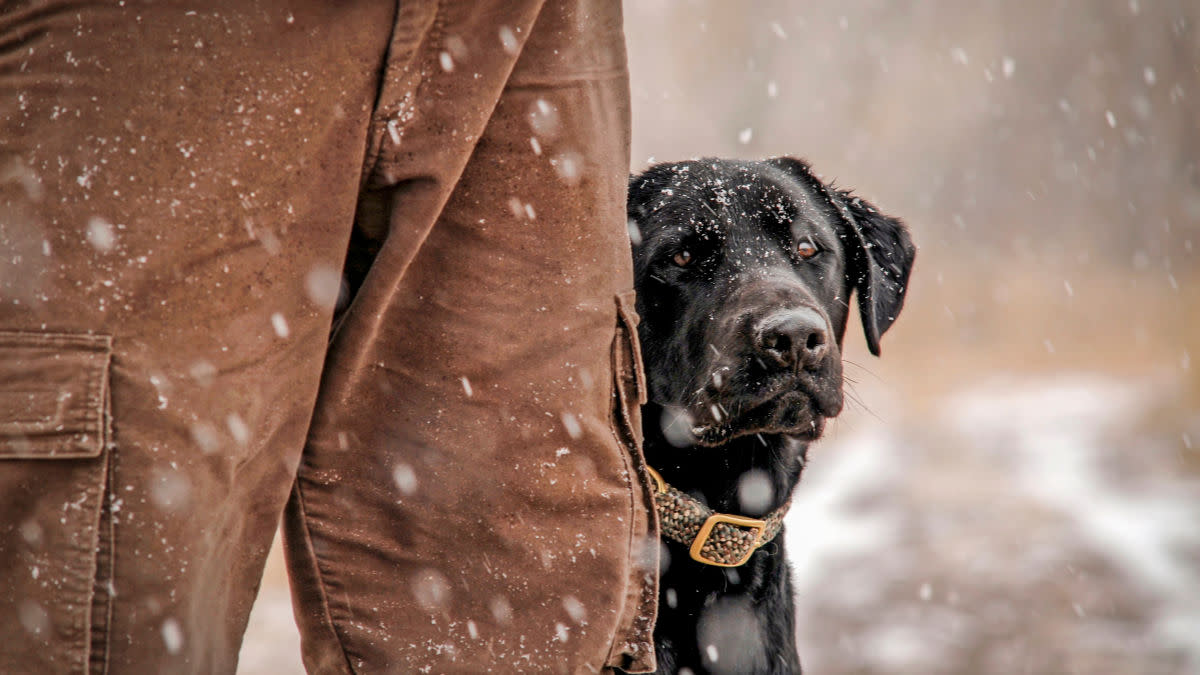
Bird dog bias is a real thing, and we all suffer from it. That’s why when we reminisce on last season, we tend to remember the things that went right. It’s human nature to fondly recall the near-flawless dog work on late-season roosters or the rare day when you exited the Northwoods early after limiting out on ruffs.
It’s not so easy to remember the coveys of quail your pointer bumped 75 yards away or the time he charged through an entire pheasant slough and cleared it before locking point on a cottontail. From conditioning to performance, our bias toward our dogs colors our memories and clouds our training decisions. But the offseason is the time to be honest and work on your hound’s shortcomings.
He Wouldn’t Stay
Susanna Love is a well-known dog trainer who married into the Smith family, many of whom are legends in the pointing dog world. She stressed to me that a good dog should know three things: when to go out, when to come back, and when to stay. The last one might be the most important.
If you’ve never seen a dog break in the field, you’ve probably never hunted with a dog in the field. Steadiness is one of the biggest issues among hunting dogs, and upland dogs don’t have a monopoly on it—waterfowl retrievers are highly prone to running off early as well. This is because it’s an unnatural behavior, and worse, we often condition our dogs to break through our training efforts.
Picture it this way: You’ve got your bird dog in the yard and you throw a dummy. The dog goes to get it, and you repeat. That dog has learned he doesn’t need to wait. Or maybe you heel him or have him sit and stay, and then you throw the dummy and send him immediately. Now he has to wait for one second, maybe two. That’s awful close to not waiting at all, which is what will happen when excitement is running high in the field.
Everything from daily feeding to retrieving in the neighborhood soccer fields can, and should, involve an eye toward steadiness. Making your retriever wait for a minute or more to run a retrieve, and watching his body language relax during the wait, is a good start. The idea is to let him know that you are always in control of the release, regardless of the excitement or distractions around.
He Wouldn’t Hunt
As Love pointed out, getting a dog to understand when it’s time to hunt is another big issue. If you’ve got a seasoned dog with some horsepower under the hood, this probably isn’t much of an problem. But it’s also surprising how often you see someone walking through the CRP with a dog trotting in their wake.
This might just be due to an out-of-condition dog that has lost his steam, or it could be a dog that doesn’t understand the task at hand. It could be a dog that ventured too far out and got zapped to the point where he feels the only safe place is right by his owner, or that the dog is bored from a lack of action. No matter the cause, a dog walking at your boots is an undesirable result.
Dogs need to understand there’s a reward for hunting, and that means getting them success in training. Whether it’s a run-through of the “hunt dead” command where you plant bumpers in a field, or it involves mixing in some game farm work to get your dog live action, you’ve got to ensure some success to keep their interest up.
It’s also helpful to reflect on your own shortcomings. If you hunted the same logging road everyone else did, and didn’t run across many woodcock or grouse, then it’s time to open onX. Reenergizing your dog may be as simple as finding new country and getting off the beaten path.
He Wouldn’t Retrieve
The “come” command is something all dog owners will use thousands of times. A dog has to flawlessly understand this command in order to be a good hunter and stay safe in the field. If you can’t call your dog off a porcupine or when he gets too close to a roadway, that’s bad news. This is also the foundation of a good retrieve, which is something all of us want out of our partners.
The key to the come command is starting with puppies and making sure they have to come to you. This might be in a hallway in your house where they can’t squeeze by, or it might be in the yard on a leash. For older dogs that don’t obey it 100% of the time, it’s best to step back in time and break out the check cord.
A 25- or 50-foot check cord allows you the chance to reel the dog in no matter what. He has no choice but to obey you, whether he’s retrieving or not. If you had trouble recalling your dog in the field last fall during any situation, work on it now and throughout the summer.
While it’s not so easy to teach an old dog new tricks, refining their skills should be the focus in the offseason. Attention to detail with your bird dog in spring and summer will lead to more hunts that suck less next fall.
Feature image via John Hafner.



